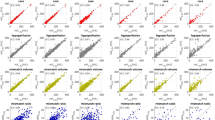Abstract
This study uses the electron paramagnetic resonance (EPR) method to study changes in the relative nitric oxygen content in the cortex of a rat brain in conditions of acute ischemia. Laser-induced vascular thrombosis is used as the model of ischemia. Rose bengal is administered into the bloodstream beforehand. In response to laser beaming, it generates reactive oxygen species, which induces protein coagulation, vascular wall damage, and, as a consequence, the formation of thrombus. It is shown histologically that the acute ischemic process ends a day after the laser surgery, and active remission, with the corresponding morphological changes in the area of the lesion, starts within three days. The relative nitric oxide content is determined 1 and 3 days after the brain vascular photothrombosis using the NO–Fe–DETC paramagnetic complex as a spin trap. The nitric oxide content is estimated by the extreme lower field of the EPR spectrum of this complex. It is shown that a significant increase in the relative nitric oxide (NO) content occurs on the third day after laser surgery and coincides with the beginning of remission after the acute ischemia. A possible role of nitric oxide in the remission is discussed in the study.



Similar content being viewed by others
REFERENCES
S. R. Vincent, Progr. Neurobiol. 42, 129 (1994).
D. S. Bredt and S. H. Snyder, Ann. Rev. Biochem. 63, 175 (1994).
D. H. Shin, H. Y. Lee, H. J. Kim, et al., Neurosci. Lett. 270, 53 (1999).
E. W. Cheon, C. H. Park, S. S. Kang, et al., Neuroreport 14, 329 (2003).
J. Mares, K. Nohejlova, P. Stopka, et al., Physiol. Res. 65, 853 (2016).
B. L. Psikha, N. I. Neshev, E. M. Sokolova, and N. A. Sanina, Russ. J. Phys. Chem. B 14, 571 (2020).
D. H. Shin, H. Y. Lee, H. J. Kim, et al., Neurosci. Lett. 270, 53 (1999).
E. W. Cheon, C. H. Park, S. S. Kang, et al., Neuroreport 14, 329 (2003).
J. J. Lopez-Costa, J. Goldstein, and J. P. Saavedra, Neurosci. Lett. 232, 155 (1997).
C. Iadecola, Trends Neurosci. 20, 132 (1997).
L. Zheng, J. Ding, and J. Wang, Anatom. Rec. 299, 246 (2016).
V. Labat-gest and S. Tomasi, J. Vis. Exp. 9, 50370 (2013). https://doi.org/10.3791/50370
B. D. Watson, W. D. Dietrich, R. Busto, et al., Ann. Neurol. 17, 497 (1985).
A. M. Shakhov, A. A. Astaf’ev, A. A. Osychenko, and V. A. Nadtochenko, Russ. J. Phys. Chem. B 10, 816 (2016).
B. Gajkowska, M. Frontczak-Baniewicz, R. Gadamski, et al., Acta Neurobiol. Exp. 57, 203 (1997).
A. R. Saniabadi, K. Umemura, N. Matsumoto, et al., Thromb. Haemost. 73, 868 (1995).
B. Romeis, Mikroskopische Technik (Oldenbourg, München, 1968).
T. S. Konstantinova, A. E. Bugrova, T. F. Shevchenko, A. F. Vanin, and G. R. Kalamkarov, Biophysics 57, 229 (2012).
A. L. Kovarskii, V. V. Kasparov, A. V. Krivandin, O. V. Shatalova, R. A. Korokhin and A. M. Kuperman, Russ. J. Phys. Chem. B 11, 233 (2017).
A. P. Vorotnikov, Russ. J. Phys. Chem. B 9, 866 (2015).
A. F. Vanin, A. Huisman, and E. E. van Faassen, Methods Enzimol. 359, 27 (2002).
M. Yu. Obolenskaya, A. F. Vanin, P. I. Mordvintcev, A. Molsch, and K. Decker, Biophys. Biochem. Res. Commun. 202, 571 (1994).
J. P. Bolanos and A. Almeida, Biochim. Biophys. Acta 1411, 415 (1999).
Shinya Sato, T. Tominaga, T. Ohnishi, et al., Biochim. Biophys. Acta 1181, 195 (1993).
T. Tominaga, S. Sato, T. Ohnishi, and S. T. Ohnishi, Brain Res. 614, 342 (1993).
A. V. Lobanov, G. I. Kobzev, K. S. Davydov, and G. G. Komissarov, Russ. J. Phys. Chem. B 8, 277 (2014).
Author information
Authors and Affiliations
Corresponding author
Additional information
Translated by A. M. Khaitin
Rights and permissions
About this article
Cite this article
Konstantinova, T.S., Shevchenko, T.F., Barskov, I.V. et al. Changes in the Relative Nitric Oxide Content in the Cortex of a Rat Brain in the Acute Ischemia Model. Russ. J. Phys. Chem. B 15, 119–122 (2021). https://doi.org/10.1134/S1990793121010218
Received:
Revised:
Accepted:
Published:
Issue Date:
DOI: https://doi.org/10.1134/S1990793121010218




